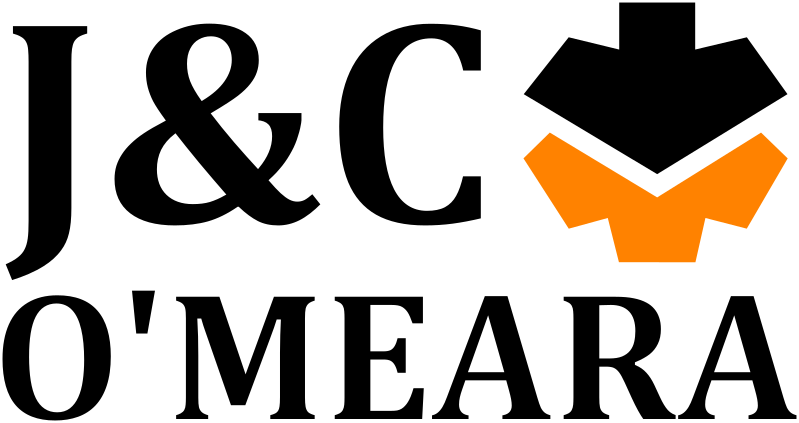Membrane Press vs. Traditional Press: Which is Better?
- John Shepperd

- May 13
- 6 min read

Woodworking presses are essential for laminating veneers and creating bonded panels. Two common types used in woodworking are membrane presses and traditional presses (the latter often referring to flat hydraulic or pneumatic presses, such as veneer hot presses). If you’re considering an investment in pressing equipment, you may be wondering how a membrane press compares to a more conventional press design. Each type has its strengths, and the best choice depends on your specific applications. In this article, we put membrane press vs. traditional press head-to-head to examine their differences, advantages, and ideal use cases, helping you determine which is better for your needs.
What is a Membrane Press?
A membrane press uses a flexible membrane (usually made of rubber or silicone) along with vacuum and/or hydraulic pressure to press materials onto a workpiece. In operation, the workpiece (often a board with glue and a veneer or vinyl foil on top) is placed in the press bed, and the membrane is lowered over it. Air is evacuated (creating a vacuum) and sometimes additional pressure is applied, forcing the membrane to conform tightly around the piece. The result is even pressure on all surfaces, making membrane presses excellent for irregularly shaped or 3D components. They also incorporate heating elements to activate adhesives and ensure a proper bond. Membrane presses are commonly used for tasks like veneering curved cabinet doors, profile-wrapped components, and any application where a uniform press on a complex shape is required. They tend to be versatile machines, capable of working with a variety of materials – from natural wood veneer to PVC foils – and can accommodate different shapes in one pressing cycle.
What is a Traditional Press?
A traditional press in woodworking usually refers to a platen press, such as a veneer press or cold press. This type of machine uses rigid flat plates (platens) and typically hydraulic pressure (or screw/vice mechanisms in smaller presses) to squeeze materials together. Traditional veneer presses often have heated platens for curing glue when applying veneer to flat panels. They are ideal for flat workpieces – for instance, pressing a sheet of veneer onto a plywood or MDF board to make a flat panel. Many traditional presses allow multiple pieces to be stacked (with spacers), especially in industrial hot presses known as multi-daylight presses, enabling pressing of several boards in one cycle. These machines are renowned for their high pressure and quick cycle times when dealing with flat surfaces. However, because they use rigid plates, they cannot effectively press deeply contoured shapes or raised mouldings – anything that isn’t flat will only get pressure on the highest points, leaving voids or unpressed areas elsewhere. Traditional presses are common in factories for making veneered boards, blockboard, laminating laminate sheets, and producing items like plywood or flush doors.
Key Differences Between Membrane Presses and Traditional Presses
Both types of presses serve to bond materials under pressure, but they differ in methodology and capabilities. Here are some key differences and comparisons:
Versatility of Shapes: Membrane Presses clearly win in this category. They can handle complex shapes, textures, and detailed profiles thanks to the flexible membrane. Traditional Presses are limited to flat or nearly flat work. If your products include curved or profile-milled components (e.g. kitchen doors with routed designs), a membrane press is far superior in achieving a good result. Traditional presses would struggle or require lots of rubber padding and still might not achieve uniform pressure on such pieces.
Production Speed and Volume: Traditional Presses often have an edge in high-volume flat panel production. They can press multiple panels at once (especially multi-layer presses with several openings) and typically have shorter cycle times for flat work since they just clamp and hold. Membrane Presses usually handle one layer of parts per cycle (though you can place multiple smaller parts side by side under the membrane). While modern membrane presses are efficient, if your primary need is mass-producing flat boards or veneered panels, a traditional hot press might output more per hour.
Pressure and Adhesion: Both types provide strong bonding, but the way pressure is applied differs. A traditional hydraulic press can exert extremely high pressure (measured in tons), which is great for flat laminating and even for forming laminates. Membrane presses, by contrast, may use vacuum (which is roughly 1 atmosphere of pressure) plus possibly some additional pressure (some advanced models use compressed air or oil to exert more force). In practical terms, membrane presses deliver plenty of pressure for typical veneering and thermoforming tasks – enough to ensure a solid bond across the piece. They also have the advantage of even pressure distribution; every point on the surface gets pressed equally by the membrane, which can result in very consistent glue lines and surface contact. Traditional presses apply tremendous force, but if the part isn’t perfectly flat, some areas get less pressure than others.
Material and Application Range: Membrane presses are more versatile in materials: they excel at applying PVC foils for vinyl wrapped doors, pressing natural veneers on shaped substrates, and even can be used for thermoplastic solid surface materials or forming certain plastics with heat. Traditional presses are mostly used for wood veneers, laminates (like Formica sheets) on flat panels, and gluing up flat stock. They cannot do vacuum forming of plastics or delicate foils on shaped profiles because of their design. If your manufacturing involves modern materials and coatings or you want to diversify products (e.g., adding a membrane press could allow you to produce vinyl-wrapped cupboard doors in-house), then a membrane press offers capabilities a flat press cannot.
Ease of Use and Changeover: A membrane press typically requires setting up the pieces on a tray and possibly using pins or fillers to support areas under the membrane. Systems like the MP3 Automatic Pin Membrane Press simplify this by automatically raising pins where needed to support the work – a clever feature that saves preparation time. Traditional presses might require laying out cauls or pads if pressing multiple items, but generally the setup for flat panels is straightforward (place panel between caul plates and press). Both machines often use digital controls nowadays, but membrane presses might have a few more parameters (vacuum time, heating time, etc.) to set. As for changeover, if you need to press a different thickness or type of product, a membrane press might need a membrane change or adjustment, while a traditional press might need its daylight (gap) adjusted. In terms of learning curve, neither is overly complex with proper training, but membrane presses involve handling a flexible membrane and possibly a vacuum pump system, which is a different skill set compared to a simple hydraulic press operation.
Which is Better for Your Business?
The answer to whether a membrane press or a traditional press is better ultimately depends on your production requirements:
Choose a Membrane Press if… you work with or plan to work with contoured shapes, such as raised panel doors, profile-wrapped components, or any product that isn’t flat. If you want the flexibility to press a wide range of materials (from natural wood veneers to vinyl films) and create complex designs, a membrane press is the right tool. It’s the go-to choice for cabinet door manufacturers, specialty furniture makers, and anyone doing laminating of 3D surfaces. Membrane presses are also excellent if you value multi-purpose equipment – one day you might be veneering curved panels, the next day forming a thermofoil over intricate pieces, all with the same machine. The versatility and high-quality results make it a favourite for custom and high-value woodworking projects.
Choose a Traditional Press if… your work mostly involves flat panels and high volume. For example, if you’re pressing large batches of table tops, flat doors, plywood laminations, or doing layups that require high pressure on flat stacks, a traditional veneer press could be more efficient. They are often simpler and can be very robust for heavy-duty use. Maintenance might also be slightly simpler (no membranes to replace, fewer vacuum components). If your budget is limited but you need a reliable way to press flat work, a second-hand hydraulic hot press might provide a cost-effective solution. Some workshops actually have both types: a traditional press for flat panel production and a membrane press for specialty tasks – but if you need to prioritise one, lean towards the machine that aligns with the majority of your products.
In many cases, woodworking businesses today find that a membrane press offers more overall advantages due to its flexibility. With a membrane press from J&C O’Meara’s range, you can take on a wider array of jobs knowing you have the equipment to handle them. However, if your operations are exclusively flat and large-scale, the time-tested traditional press still holds value.
Conclusion
In the debate of membrane press vs. traditional press, there is no one-size-fits-all winner – it comes down to your workshop’s focus. Membrane presses excel in versatility and are better for modern, complex designs, while traditional presses are workhorses for flat panel production. Some businesses may benefit from using both in tandem. If you’re still unsure which press is better for your needs, J&C O’Meara can help you assess your options. We supply a variety of presses and have deep knowledge of each type’s capabilities. Get in touch with our team for personalised advice and to explore our current inventory of new and used presses. We’ll ensure you find the optimal pressing solution – be it membrane, traditional, or a combination – to improve your manufacturing process and product quality.
